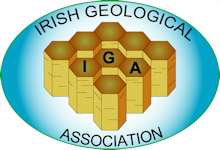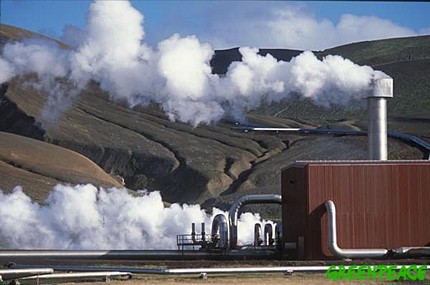IGA LECTURE Wednesday, 14th September, 2011
HARNESSING HEAT FOR ENERGY,
the IRETHERM project
Speaker: Dr. Mark Muller (Dublin Institute for Advanced Studies)
VENUE: Museum 4, Dept. of Geology, Muesum Building, Trinity College, Dublin 2.
TCD MAP and DIRECTIONS
TIME (NOTE NEW TIME): 6.00pm
ABSTRACT
Little is currently known of the potential of Ireland’s subsurface geology to provide (low-enthalpy) ge-othermal energy for district-scale space-heating and electricity generation. Both applications require identification and assessment of deep, permeable aquifers or large-volume, hot, radiogenic granitic intrusions. Ongoing technological advances in utilising medium-temperature (110-160°C) groundwa-ters provide real potential for electricity generation within the upper range of thermal gradients observed in Ireland (~28°C/km). However, such potential can only be realised in the future if deep (4-5 km) geothermal source rocks can be identified within the country’s subsurface. IRETHERM is a new academic-government-industry collaborative project that started in March 2011, funded by Science Foundation Ireland (SFI Grant No. 10/IN.1/I3022), which aims to develop a holistic understanding of Ireland’s (all-island) low-enthalpy geothermal energy potential through integrated modelling of new and existing geophysical and geological data. IRETHERM’s overarching research objective, over a 4. year period of funding, is to establish those geological settings and localities in Ireland with the greatest potential to provide significant volumes of hot geothermal waters or hot, dry rock. The project plans to:
(i.) Understand both the 3D spatial variation in Ireland’s radiogenic crustal heat-production and the origin of the observed local and regional heat-flow variations. New measurements of crustal heat-production in 3D (using mid- to lower-crustal xenoliths and borehole core) and of temperature and heat-flow variation will be modelled with existing constraints on the geological structure and thermal properties of the crust and lithosphere.
(ii.) Develop multi-parameter modelling and interpretation software tools that advance state-of-the-art geophysical (electromagnetic, gravity, seismic) imaging of shallow and deep aquifers and granitic intrusions.
(iii.) Test a strategic set of eight ‘type’ geothermal targets spread across Ireland with a systematic program of field electromagnetic surveys interpreted using our new modelling/inversion tools. The talk evaluates currently-available temperature/heat-flow, geophysical and geological data that relate to low-enthalpy geothermal energy potential within Ireland, including a presentation of the re-sults of two recent magnetotelluric projects in Northern Ireland that assess buried aquifer and radio-genic granite targets. The talk discusses the rationale for the approaches and strategies that IRETHERM will adopt to meet the objectives outlined above, and for the eight target types we plan to investigate. Harnessing Earth’s heat for energy: the IRETHERM project. IRISH GEOLOGICAL ASSOCIATION GOLDEN JUBILEE 2011 http://www.geology.ie
Dr. Mark Muller is currently Schrödinger Research Fellow in Geophysics at the Dublin Institute for Advanced Studies, much of Muller’s current research focuses on assessing, using magnetotelluric and other geophysical techniques, the potential of Ireland’s subsurface geological formations to support a range of sustainable energy uses: geothermal energy, compressed-air energy storage and carbon capture and sequestration. He is a scientific collaborator on the SFI funded IRETHERM project. Other current research work examines the structure and evolution of the southern African lithosphere, through the modelling and integration of magnetotelluric, seismic, geochemical and other geophysical constraints. He holds a Ph.D. from University of Cambridge, U.K. and an M.Sc. from University of the Witwatersrand, South Africa.


